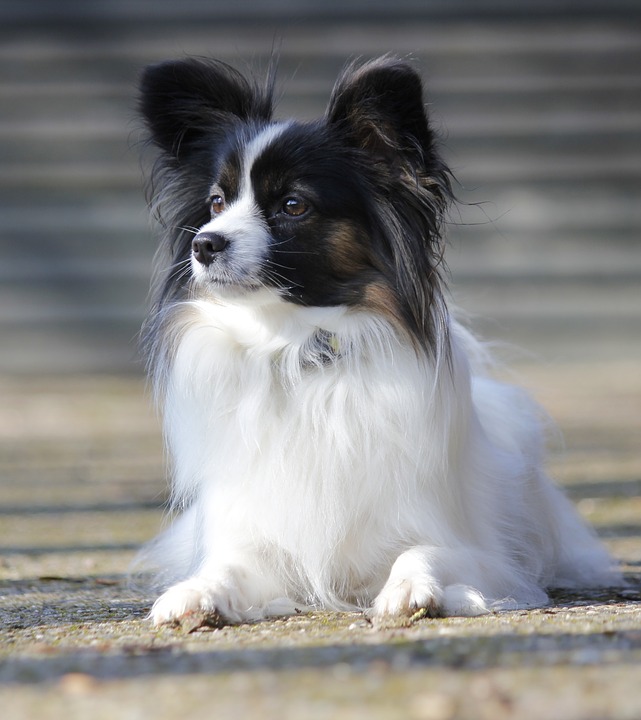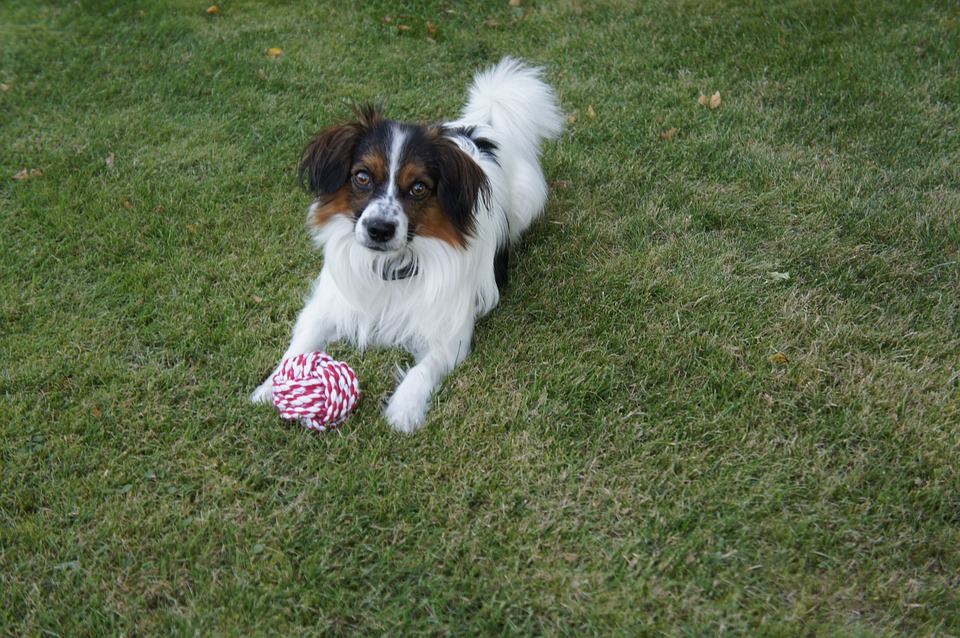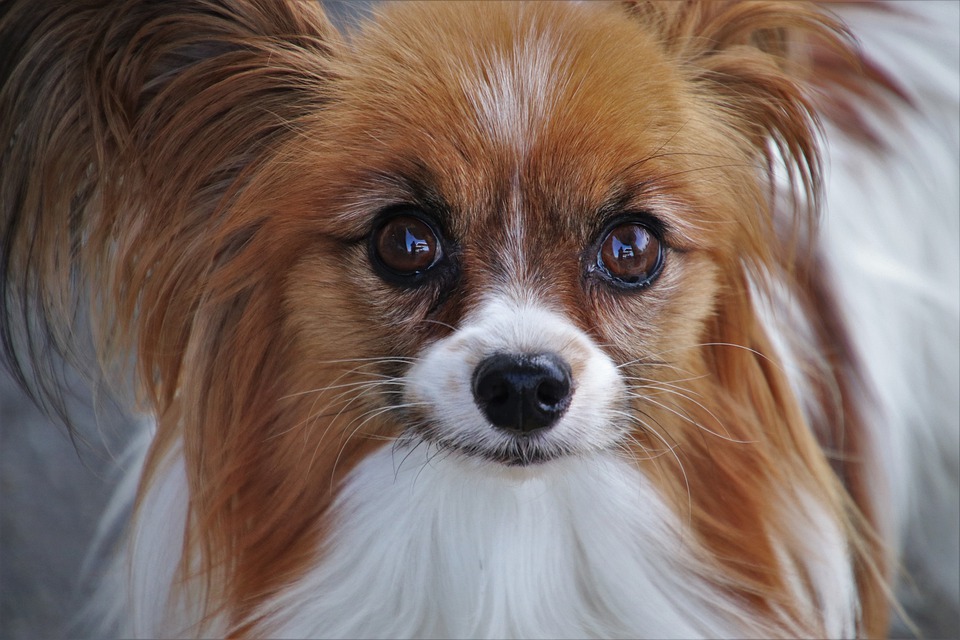The Papillon
Vital Stats of the Papillon

The following are vital stats of Papillons:
- Dog breed group: Toy
- Height: 8 to 11 inches at the shoulder
- Weight: 3 to 12 pounds
- Lifespan: 13 to 17 years
Physical Characteristics of the Papillon
The defining physical characteristic of Papillon is its unique butterfly ears. However, its sibling the Phalene is identical in all respects save for the ears, which drop down. This breed is petite, fine-boned and delicate with an elegance that belies its frolicsome nature. The Papillon stands at less than a foot tall, with the average at 11 inches. It moves would a graceful, quick and free gait, with the ears spread out like the wings of a butterfly in movement.
You can find this breed in any color, but the most common pattern is a band of color across the nose, extending onto the ears, accentuating the butterfly effect. You may also notice a flash of white on the face with coloring of the ears. The soft, one layered coat is long and straight. This breed has short hair on the muzzle and skull, but ample on the ears, chest and legs.
Care for the Papillon

Mental stimulation is a must for this vivacious breed. Daily leash walks and an active obedience training with tasks are also necessary. The Papillon particularly needs to have tasks and games that will occupy its mind. Structured expectations for behavior are necessary to prevent this little one from becoming too big for its britches, so to speak.
Because its coat is fine and only one layer, it doesn’t require much grooming. However, the exception is the ears. This is because they are tufted. Make sure to check for dirt or objects that might get catch in the ears during outdoor play as part of a daily pat down. Otherwise, a brushing two times a week is enough to keep your Papillon looking shiny and smooth.
Health of the Papillon
Similar to any other breed, the Papillon is prone to specific health problems. Some of these health problems include the following:
- patellar luxation
- seizures
- open fontanel (condition affecting skull formation)
- progressive retinal atrophy (PRA)
- allergies
- intervertebral disk disease (IVDD)
- hemophilic disorder
- von Willebrad’s Disease (vWD)
History of the Papillon

Often times when you look at a portrait of a beautiful lady or a young family from the 17th or 18th century and in pride of place you will see a small spaniel who is just as much a pat of the painting as anyone else. Those toy spaniels, which were popular in royal courts and noble homes, were the ancestor’s of today’s English Toy Spaniels, Cavelier King Charles Spaniels and, of course, the Papillon.
While the Papillon was a favorite in the French royal court, they almost disappeared after the French Revolution because of their association with the aristocracy. Fortunately, for those who love this breed, the Papillon was revived in the late 19th century. It was then that this breed was given the name that so perfectly described him: “butterfly”.
The Papillon popularity is growing, currently ranking 35th among the breeds registered by the American Kennel Club.
For more information on the Papillon or other dog breeds, don’t hesitate to contact us here at All Pets Veterinary Medical Center with the link below!
















